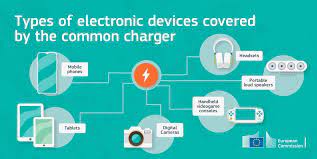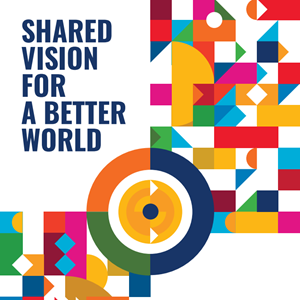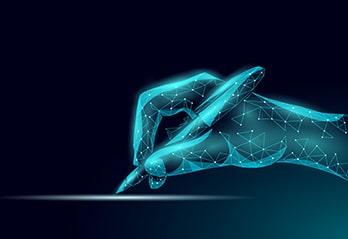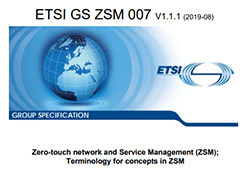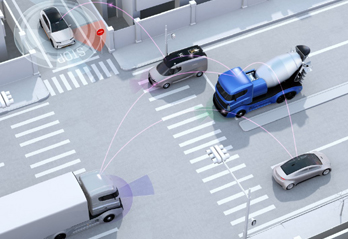The European Commission kick-starts two new Industrial Alliances: The Alliance for Processors and Semiconductor technologies, and the European Alliance for Industrial Data, Edge, and Cloud. The two new alliances will advance the next generation of microchips and industrial cloud/edge computing technologies and provide the EU with the capabilities needed to strengthen its critical digital infrastructures, products, and services. The alliances will bring together businesses, academia, users, as well as research and technology organisations.
Industrial Alliance for Processors and Semiconductor technologies: The Industrial Alliance on processors and semiconductor technologies will be a key instrument to further industrial progress in the EU in this area. It will identify and address current bottlenecks, needs and dependencies across the industry. It will define technological roadmaps ensuring that Europe has the capacity to design and produce the most advanced chips while reducing its overall strategic dependencies by increasing its share of the global production of semiconductors to 20% by 2030.
European Commission Proposes a Common Charger for Electronic Devices
The Commission takes an important step against e-waste and consumer inconvenience, caused by the prevalence of different, incompatible chargers for electronic devices. Years of working with industry on a voluntary approach already brought down the number of mobile phone chargers from 30 to 3 within the last decade but could not deliver a complete solution. The Commission is now putting forward legislation to establish a common charging solution for all relevant devices.
With proposal for a revised Radio Equipment Directive, the charging port and fast charging technology will be harmonised: USB-C will become the standard port for all smartphones, tablets, cameras, headphones, portable speakers, and handheld videogame consoles. In addition, the Commission proposes to unbundle the sale of chargers from the sale of electronic devices. This will improve consumers' convenience and reduce the environmental footprint associated with the production and disposal of chargers, thereby supporting the green and digital transitions.
The European Commission and the High Representative adopted a Joint Communication on the EU Strategy for cooperation in the Indo-Pacific. The Joint Communication contains concrete actions to Implementing the strategy: The EU and the Indo-Pacific are highly interconnected, with many shared interests and solid ties, from trade and investments to research and innovation, as well as sustainable development, climate change, biodiversity protection and security.
The EU is stepping up its strategic engagement with the Indo-Pacific region. This region is increasing in strategic importance for Europe. Its growing economic, demographic, and political weight makes it a key player in shaping the rules-based international order and in addressing global challenges. The EU aims to contribute to the region's stability, security, prosperity, and sustainable development, in line with the principles of democracy, rule of law, human rights and international law.
DIN, DKE & VDI developing the German Standardization Roadmap for Circular Economy
Together with the German Federal Ministry for the Environment, Nature Conservation and Nuclear Safety (BMU), the German Institute for Standardization (DIN) and the German Commission for Electrical, Electronic & Information Technologies (DKE) of DIN and VDE and the Association of German Engineers (VDI) have announced the launch of the German Standardization Roadmap Circular Economy. The aim of the Standardization Roadmap is to provide an overview of the status quo of standardization in the field of Circular Economy, describe the requirements and challenges for seven key topics, and identify possible concrete needs for action for future standards and specifications.
-
Essential support for climate targets: The Circular Economy is of particular importance in achieving the goals of the Green Deal and the Climate Change Act 2021. To achieve the ambitious climate protection targets, new and revised technical rules for the Circular Economy are now needed. The Standardization Roadmap Circular Economy will set the path for this, thus driving forward the green transformation of Germany and Europe.
-
Seven key topics set: The Roadmap will focus on the following key topics: Electrotechnology and ICT, batteries, packaging, plastics, textiles, construction & municipalities, and digitalization/business models/management. These are based on the key topics of the EU's Circular Economy Action Plan. With a German Standardization Roadmap for Circular Economy, specific national standardisation needs will be identified with the aim of feeding them into the European and international standardisation bodies.
ETSI Releases two Technical Reports to Support US NIST Standards for Post-Quantum Cryptography
In 2016 the US National Institute of Standards and Technology (NIST) announced their intention to develop new standards for post-quantum cryptography. They subsequently initiated a competition-like standardization process with a call for proposals for quantum-safe digital signatures, public-key encryption schemes, and key encapsulation mechanisms. NIST have stated that they intend to select quantum-safe schemes for standardization at the end of the current, third round of evaluation. The ETSI CYBER Quantum Safe Cryptography committee is pleased to announce the publication of two Technical Reports that give descriptions of each of the candidate schemes in the third round of the NIST standardization process:
-
ETSI TR 103 616 V1.1.1 (2021-09) "Quantum-Safe Signatures"
-
ETSI TR 103 823 V1.1.1 (2021-09) "Quantum-Safe Public Key Encryption and Key Encapsulation"
The descriptions contained in the reports are not intended to be used as substitutes for the detailed specifications submitted to the NIST process. Instead, the emphasis is on providing unified, concise descriptions of each of the schemes, using consistent notation and terminology, to facilitate understanding and easy comparison.
ETSI is pleased to announce the release of three major specifications and reports developed by its Zero-touch network and Service Management (ZSM) group. ETSI GS ZSM 003, defines end-to-end network slicing management and orchestration architecture blueprint and solutions, and ETSI GS ZSM 009-1 specifies the enablers for closed-loop automation. The general security aspects related to the ZSM framework and solutions and potential mitigation options are introduced in the ETSI GR ZSM 010.
-
ETSI GS ZSM 003 defines an architecture blueprint and solutions for zero-touch management and orchestration of end-to-end, cross-domain network slicing – supporting both fulfilment and assurance processes. Network slicing spans different technological domains, from the User Equipment (UE) through, for example, the access network, transport network, core network, to the application.
-
ETSI GS ZSM 009-1 specified “Governance” services that allow the creation, execution, and life-cycle management of a closed loop, as well as the steering of its behavior. A closed loop enables the continuous optimization and adaption of network and resource utilization as well as automated service assurance and fulfilment.
ETSI GR ZSM 010 identifies potential security threats related to the ZSM framework and solutions, and proposes mitigation options that should be considered by the ZSM specifications to ensure that the automated processes are secured and deliver the intended business outcomes.
The ETSI MEC Industry Specification Group (ETSI ISG MEC) has just released a new Group Report ETSI GR MEC 0035 to enable inter-MEC system deployment and MEC-Cloud system coordination. This Report was motivated by the mobile network operators’ interest in forming federated MEC environments and enabling information exchange in a secure manner, in the event that MEC platforms or applications belong to different MEC systems.
ETSI GR MEC 0035 analyses eight use cases that require inter-system coordination, including those in multi-mobile network operators’ (MNOs) environments. Recommendations, evaluations and possible technical solutions to solve key issues are issued for each use case. Two use cases make recommendations to achieve V2X service continuity considering a typical MEC federation scenario of V2X services, in a MEC-system environment with multiple operators and multiple equipment manufacturers. Another, use case describes a location-based immersive Augmented Reality game where a MEC federation can serve as a solution to limitations in providing an interactive AR application with users connected via different mobile operators. Additional use cases include:
Download the full Report by following this link: ETSI GR MEC 0035







